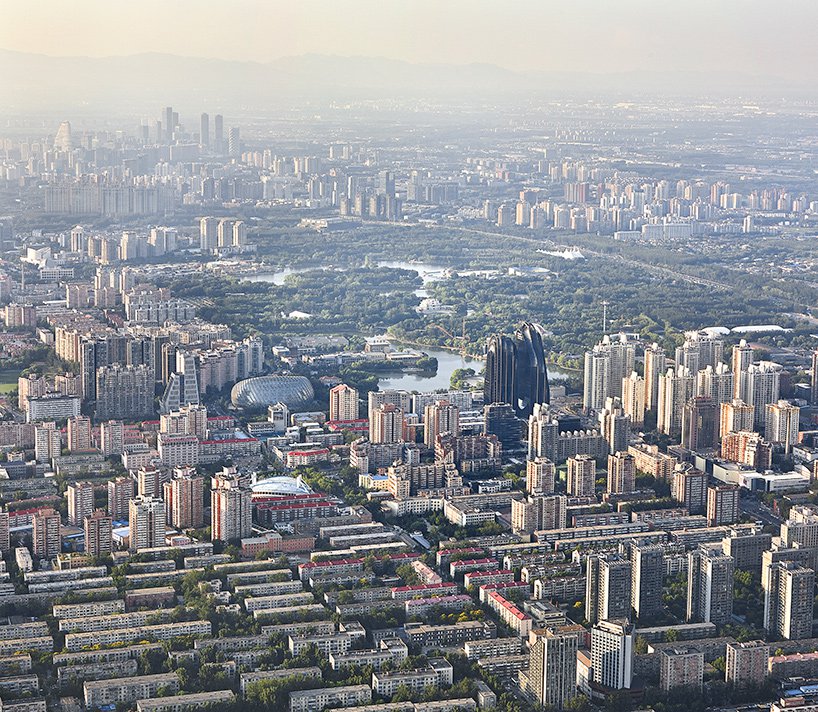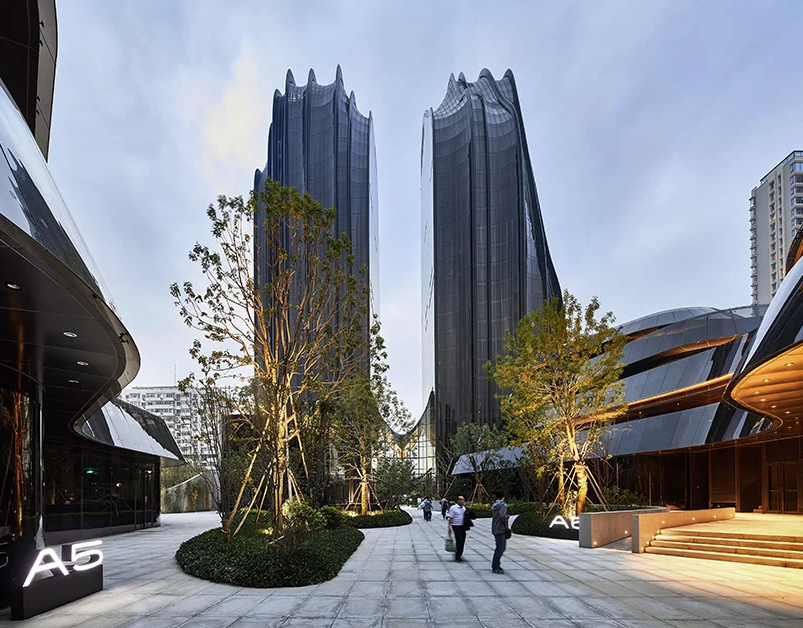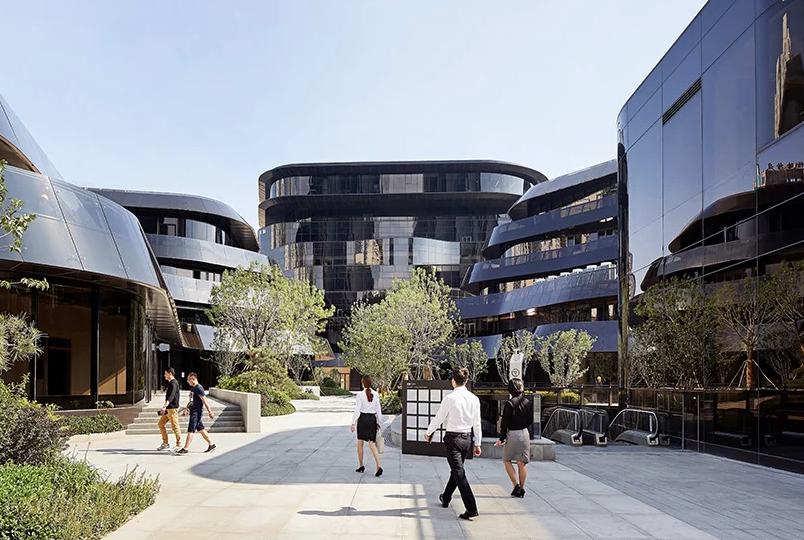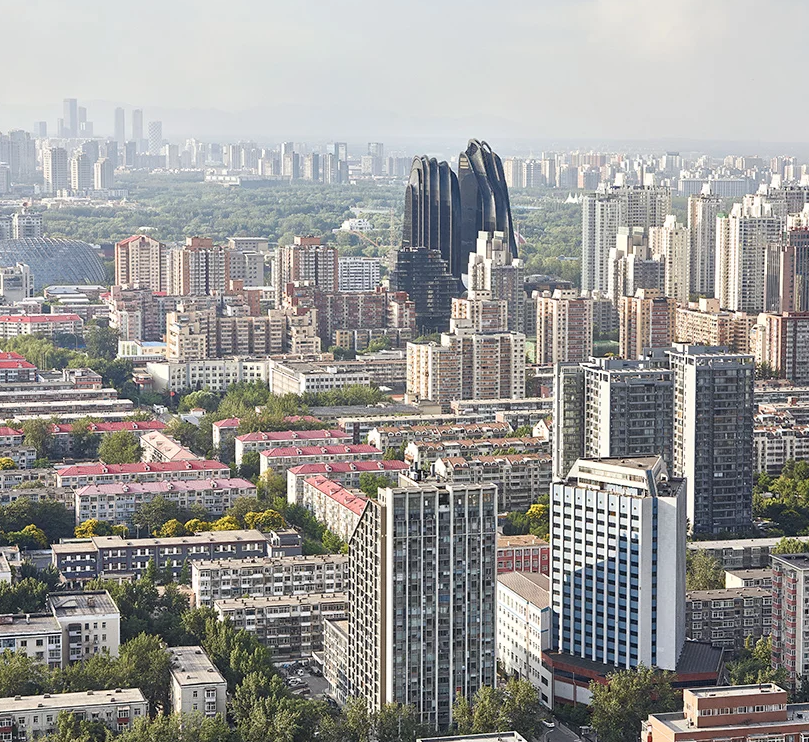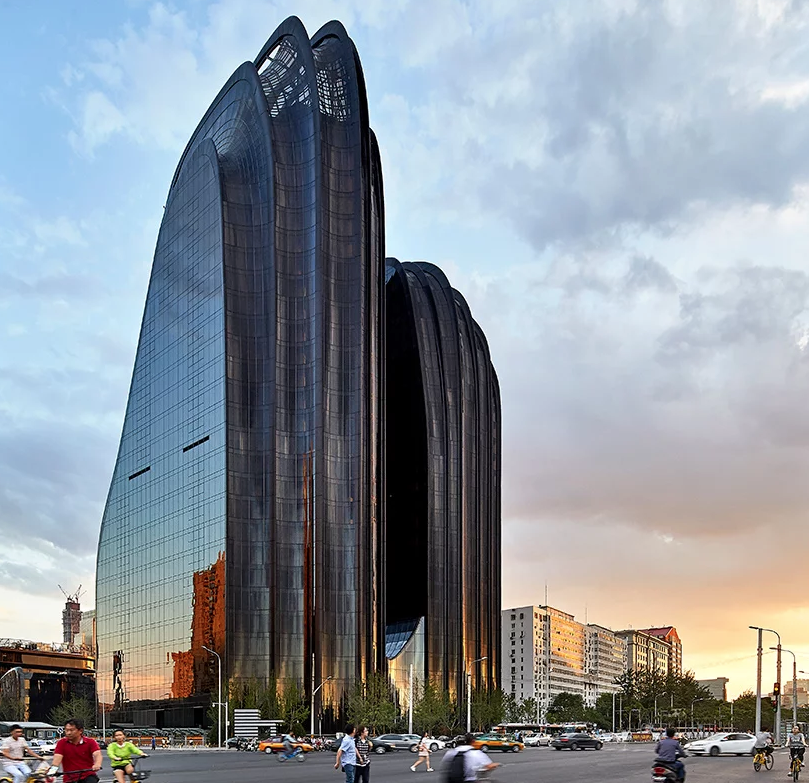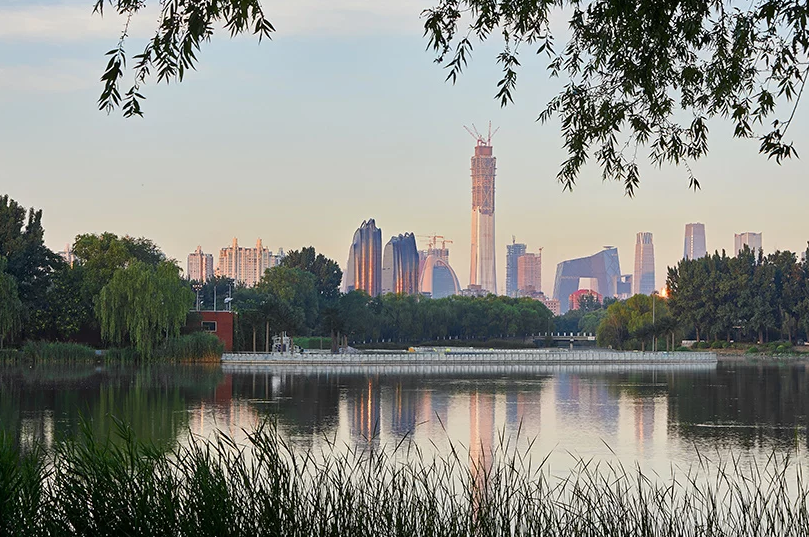Building of the Week: blurring the lines between nature and the superficial construction in the Chaoyang Park Plaza - Beijing
/MAD architects, the Chinese firm led by Ma Yansong, has completed ‘Chaoyang Park Plaza’ on the southern edge of the largest park in Beijing’s central business district.
Having a similar position and function as Central Park in Manhattan, but unlike the modern box-like buildings that only create a separation between the park and the city, “Chaoyang Park Plaza” instead is an expansion of nature. It is an extension of the park into the city, naturalizing the CBD’s strong artificial skyline, borrowing scenery from a distant landscape ─ a classical approach to Chinese garden architecture, where nature and architecture blend into one another.
The development includes the 220,000 square meter ‘Armani apartment complex’, which comprises ten buildings that have been designed to ‘unfold as a classic Shanshui painting on an urban scale’. the project — which broke ground in 2014, before topping out the following year — has been conceived as extension of the park within the city. ‘we want to blur the boundary between nature and the artificial, and make it so that both are designed with the other in mind,’ explains Ma Yansong.
Inspired by traditional Chinese landscape paintings, MAD’s design introduces a range of natural forms and spaces. Connected by a glazed atrium, the site’s asymmetrical twin tower office buildings sit at the base of the park’s lake and appear as two emerging mountain peaks. the small-scale, low-rise commercial buildings appear as eroded mountain rocks whose seemingly random positioning forms a secluded urban garden. finally, the two multi-story Armani apartments to the southwest feature staggered balconies that encourage outdoor living
The development’s overall environment is shaped by smooth, curved surfaces that seek to evoke the emotion and aesthetic resonance of a traditional Chinese ink painting. the landscape that weaves itself in between the buildings incorporates pine trees, bamboo, rocks, and ponds — all traditional eastern landscape elements that imply a deeper connection between the architecture and classical space. meanwhile, Japanese graphic artist and curator Kenya Haraled the design of the project’s signage system.
in modern cities, architecture as an artificial creation is seen more as a symbol of capital, power or technological development; while nature exists independently,’ says Ma Yansong, founder of MAD architects. ‘it is different from traditional eastern cities where architecture and nature are designed as a whole, creating an atmosphere that serves to fulfill one’s spiritual pursuits.’


